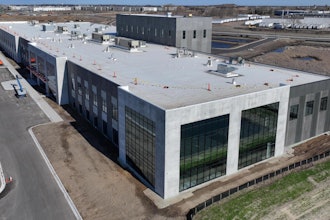BALTIMORE (AP) - Allied Chemical Co. deliberately withheld test results in the 1970s that indicated high arsenic levels in a Baltimore park near one of its plants, a task force concluded.
Internal documents show that the company knew that large amounts of the poison were released into Swann Park, according to the report issued Tuesday by the Swann Park Task Force.
Particles laden with arsenic blew through torn filters on the pesticide factory's smokestacks, at one point blanketing the park's ball fields ''like snow'' in the 1960s, the report said. But local health officials were allowed to believe that that levels of arsenic in the park were low and came from routine spraying of weed killer.
Allied's own tests in 1976, the year the plant was closed, revealed that arsenic levels in the soil of the park were as high as 10,000 parts per million, the report said. Health officials thought they were as low as 0.25 parts per million.
The popular park has been used by the former Southern High School football and baseball teams, as well as local sports leagues. Major League Baseball Hall of Famers Al Kaline and Reggie Jackson there played as youngsters.
The city and state closed the park in April after Allied's successor company, Honeywell International, turned over confidential documents to the state showing high arsenic levels in the park dating back three decades.
The state Department of the Environment has given Honeywell until next month to come up with a plan to clean up the contamination.
A spokeswoman for Honeywell International, Allied's successor, said it is not known why the company did not share its test results in 1976. ''Events and actions that long ago are unfortunately not clear to us today,'' spokeswoman Victoria Streitfeld said.
A dangerous poison in large doses, arsenic in the environment in much smaller concentrations has been linked to bladder cancer, as well as lung and skin cancers.
The state now generally requires a cleanup of arsenic in residential areas when it is found at 20 parts per million. There was no cleanup standard in the 1970s.
The effect of the arsenic on residents is not clear, city health officials said. A report released by a federal health agency in June said children who played on arsenic-laced dirt in the park since 1976 probably have no increased risk of disease unless they ate the soil.
But that report was based on lower arsenic levels than those revealed Tuesday, and it might now be revised, according to the Agency for Toxic Substances and Disease Registry.


















